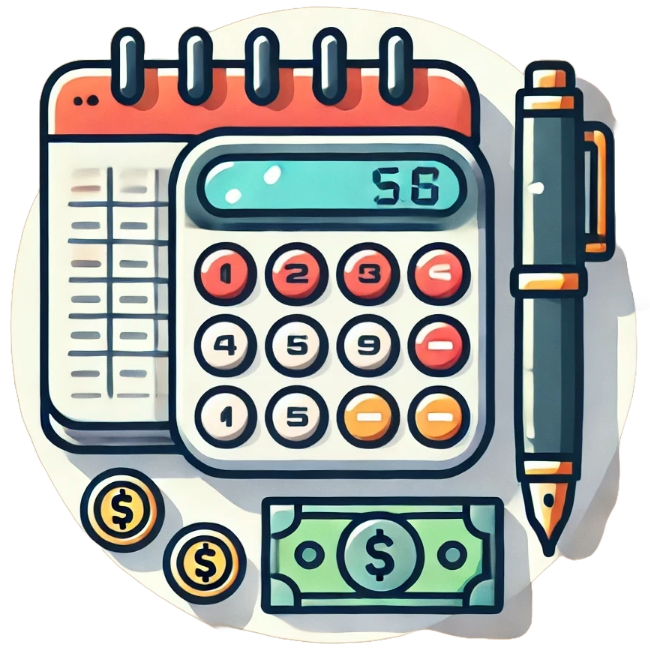Publication Date: July 19, 2024
Daytrading Part 2: Which Products Are Best to Use and What is Leverage?
On July 5, you were able to read about how to prepare for trading in Part 1 of our series on Day trading.
You can read part 1 here. Today, we will discuss the products that are well-suited for private day traders and dive deeper into the concept of leverage.

Leverage: A Curse and a Blessing!
In day trading, leveraged products are frequently used. The term "leverage" refers to the ability to increase potential returns by borrowing capital. While leverage can significantly boost profits, it also increases risk. Here's how it works:
A well-known example of a leveraged product is a future. We will use the AEX future as an example.
First, it is important to understand the underlying value of the future. All shares have their weighting within the index. For example, Shell, Unilever, and ASML together account for nearly 50% of the AEX Index. These three companies, therefore, have a significant influence on the AEX's position.
For illustration: on Wednesday, July 17, 2024, ASML announced disappointing news, leading to an 11% drop in the stock. This fall alone caused the AEX to drop by 1.7%.
Margin
One AEX future, in this example, represents €180,000 worth of shares. To trade in the future, a margin deposit is required. This is referred to as the "margin requirement."
This margin varies per broker but is typically around 10%. In this example, you can buy AEX futures worth €180,000 with a margin deposit of €18,000.
Thus, you are exposed to the risk and potential return on a package of shares worth ten times the amount in your account. The leverage is ten, meaning the value of the position fluctuates ten times faster than your initial deposit.
Why is Leverage Both a Blessing and a Curse?
In Part 1, we emphasized the importance of having a solid mental framework and always following the rules when day trading. With leveraged products, everything moves faster, and it is crucial that the trader can handle this speed. It is essential not to get greedy during good times by increasing leverage, as this can backfire when the market turns against you. Similarly, increasing risk when things are not going well is often a recipe for disaster.
The curse of leverage is that many traders take irresponsible risks and end up losing more than they can afford. On the other hand, for those who can manage it properly, the potential returns are significant. Experience shows that a leverage ratio of around five is manageable for skilled and experienced day traders.
What Products Are Suitable for Day Trading?
Shares:
Shares are straightforward, have no leverage, and generally come with low transaction costs. As a private trader, you can only go long (buy) shares, meaning you are betting on a price increase. Shares are suitable for beginner traders with a balance of at least €50,000.
You can buy shares in the morning that you expect will rise in value during the day. If your shares increase by 1%, you sell them, earning €500 on a €50,000 investment. Always buy liquid shares—shares from large companies with plenty of buyers and sellers—since liquidity ensures quick trade execution and more accurate price formation.
CFD (Contracts for Difference):
CFDs are less known and are often associated with high risk. However, the high risk is usually caused by the trader, as you are not required to take excessive risks when trading CFDs.
CFDs are traded directly with the broker. Well-known brokers include eToro, IGMarkets, and Plus500. Ensure that the broker is not a market maker (who trades against you) but that your orders are placed in the interbank system. A broker offering STP (Straight-Through Processing) is ideal, as your orders are executed in the market at the best possible price. STP brokers only charge transaction fees and do not take positions themselves, meaning they only act as intermediaries.
Underlying Value
CFDs have an underlying value, which could be indices or stocks. The advantage of a CFD is that the underlying value is often small. For example, a CFD on the AEX typically has a value of 1x the AEX index. So if the AEX is at 900 points, one CFD would be worth €900. This allows you to trade smaller portfolios efficiently.
Additionally, CFDs allow you to anticipate falling prices by first placing a sell order (short) and then closing it with a buy order.
While all CFD brokers offer leverage, it is critical that novice traders use it sparingly. If you are new to day trading, avoid using leverage altogether.
CFDs generally have higher transaction costs than shares or futures. However, they are accessible products with many possibilities and are widely used by professional traders and algorithmic trading systems due to the advanced trading platforms.
Futures:
Futures are similar to CFDs but are traded on an exchange rather than directly with the broker. Futures also tend to have a higher underlying value.
In our example, a CFD on the AEX is worth €900, while a future on the AEX is worth €180,000.
Futures are suitable for skilled traders with a balance of at least €50,000. This amount is recommended due to the leverage and the high underlying value. If you buy 1 AEX future when the index is at 900 points, you control a €180,000 position with €50,000 of margin. This gives a leverage ratio of 3.6.
If the AEX index rises 1% that day, your balance increases by 3.6%, which translates to a profit of €1,800 on a €50,000 balance. Since you are trading a large position with one future, transaction costs are relatively low.
Turbocertificates:
Like CFDs and futures, turbo certificates track the underlying asset (such as the AEX Index) and can respond to both rises and falls. A turbo always involves leverage and has a built-in stop-loss mechanism. Turbos can be traded both on an exchange and with a broker.
The key difference between turbos and CFDs or futures is the built-in stop-loss. A turbo automatically expires if the underlying asset reaches the stop-loss level. Turbos also allow you to trade smaller amounts, making them suitable for novice traders with modest capital, as long as you do not use high leverage. However, the cost of trading turbos tends to be higher than futures.
Other Products:
Options are popular among traders, but they are less attractive to beginner-day traders. Option trading is complex and best suited to experienced professionals.
Additionally, currency trading (Forex) and cryptocurrencies can be considered. Forex trading is the largest market in the world and was once only accessible to professionals. It is now available to individuals but requires specialized knowledge. Forex trading is more suited to professionals or algorithmic models and less suitable for private day traders.
Cryptocurrencies have gained popularity due to their potential for high returns. Many investors hold long-term portfolios in crypto, often without fully understanding the technology behind it. Day trading cryptocurrencies is difficult due to the high volatility, complex analysis, and high costs. Therefore, crypto is better suited for long-term investment rather than day trading.

.svg)




